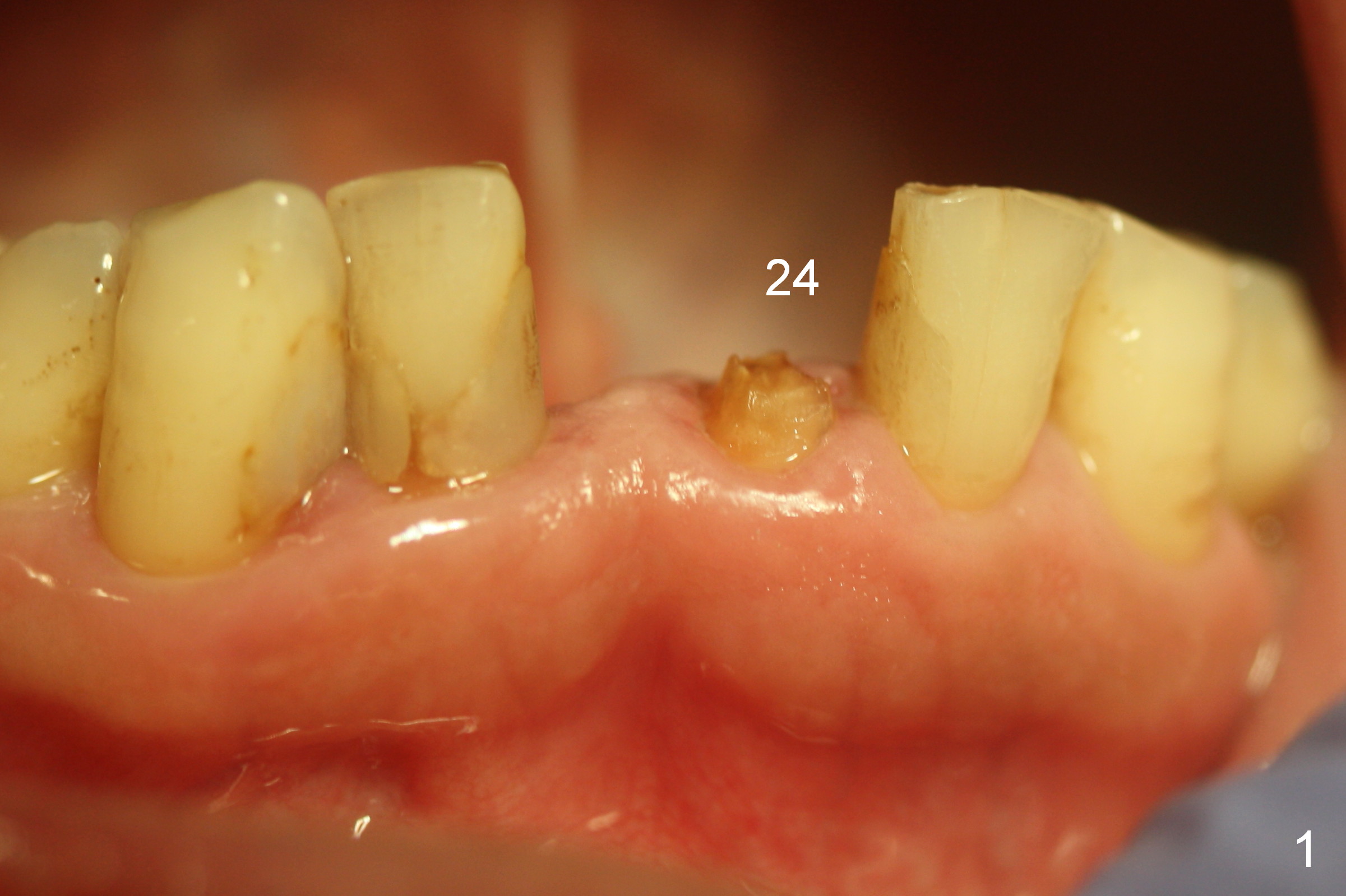
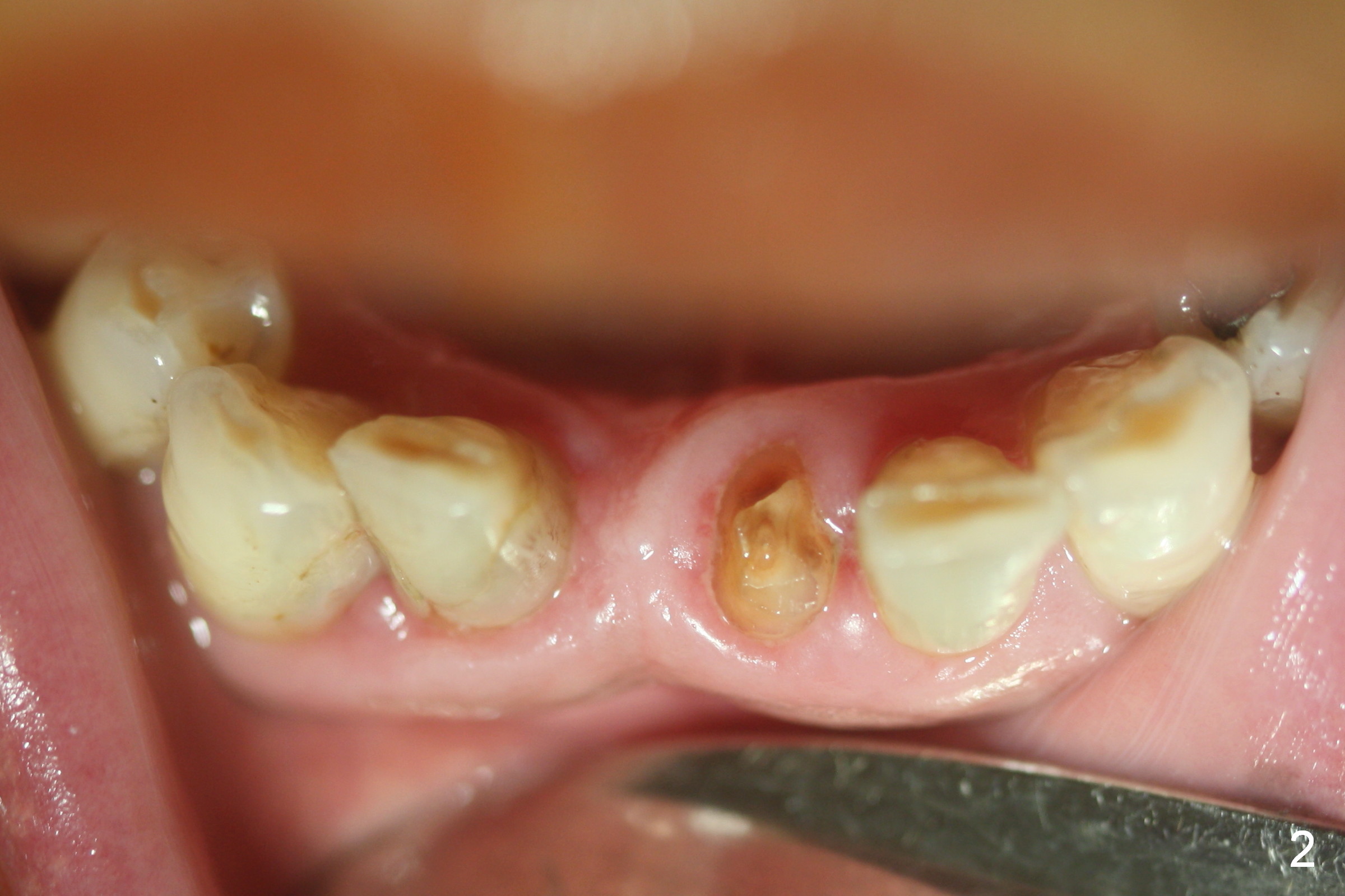
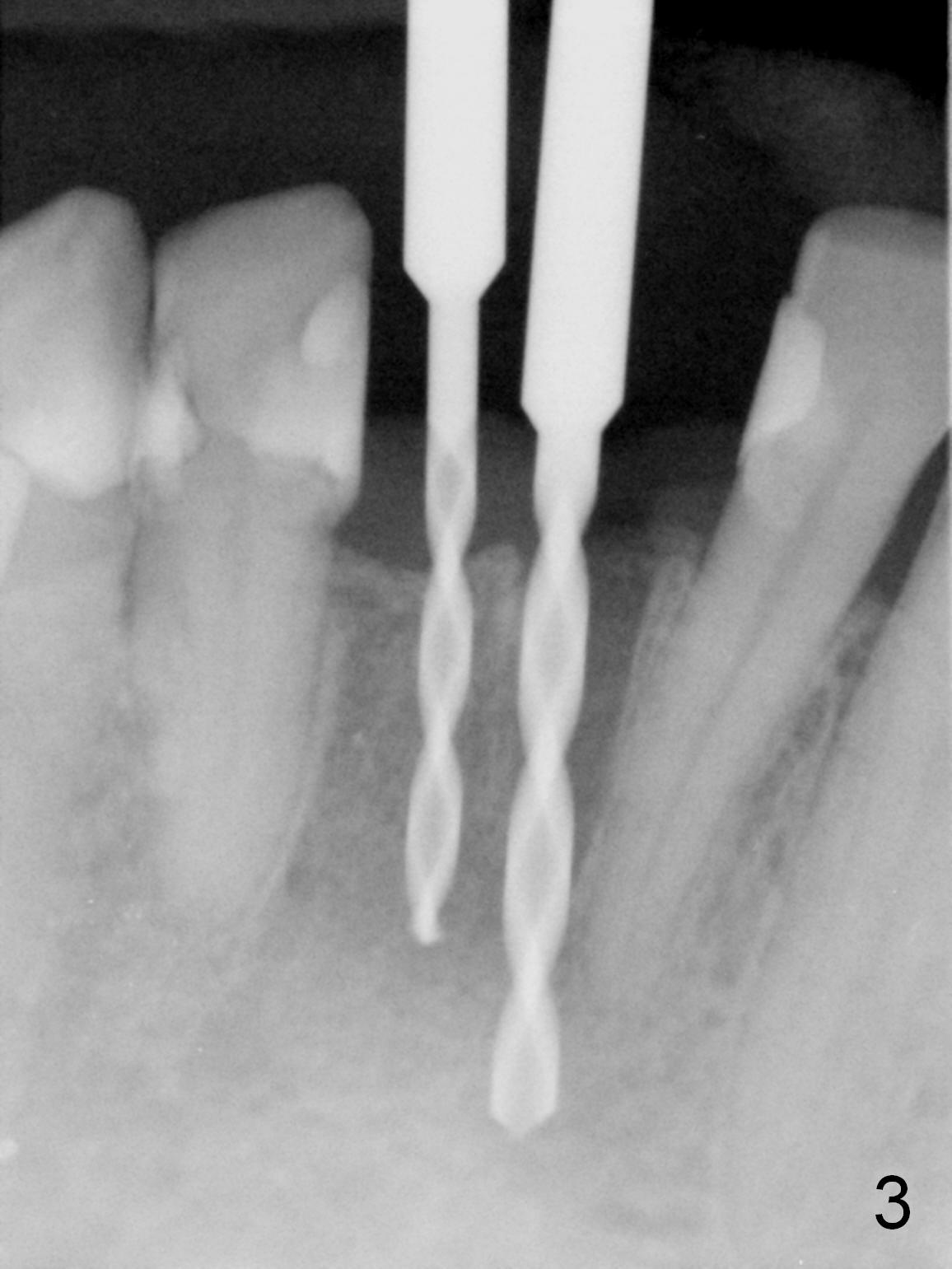
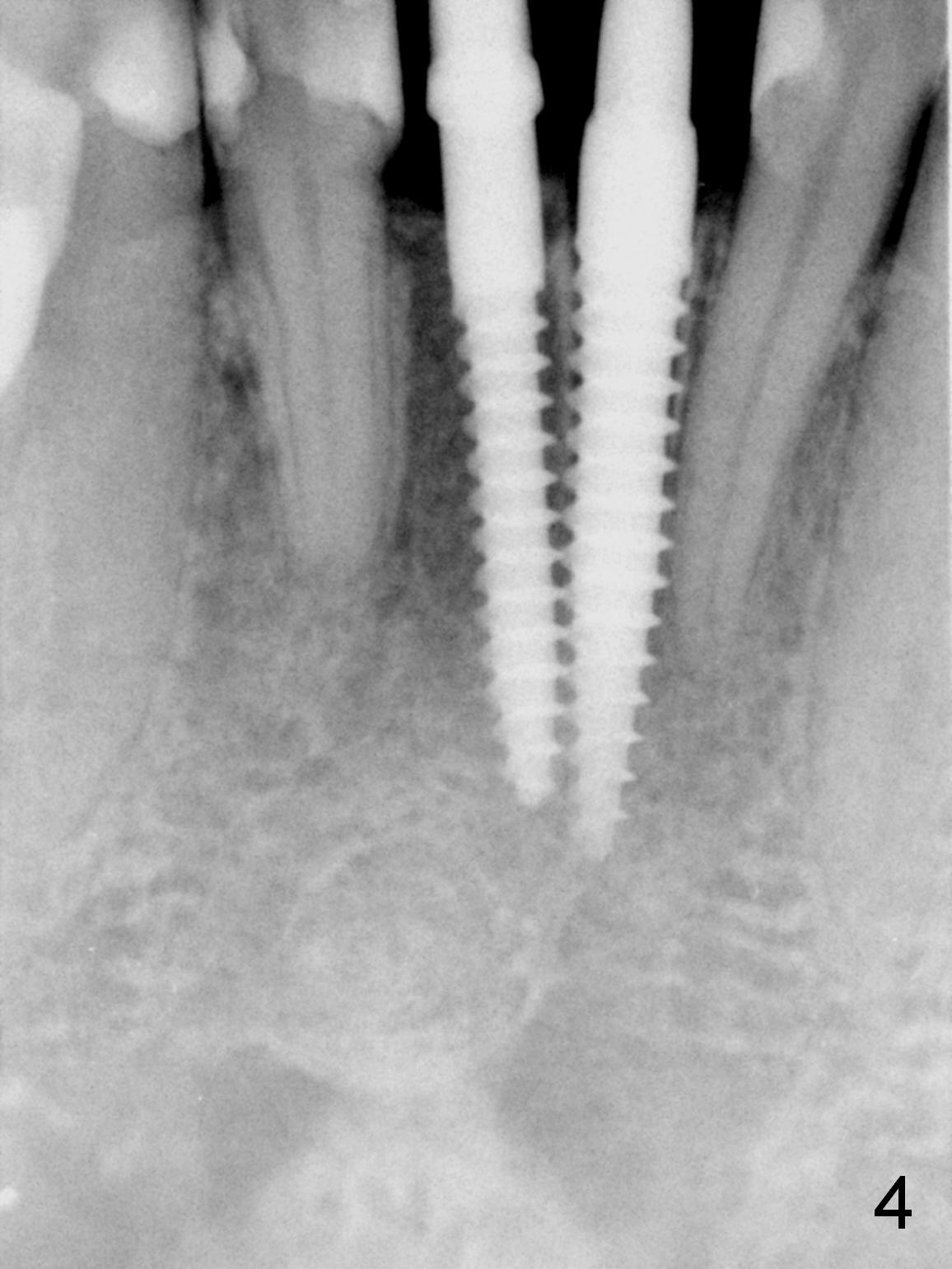
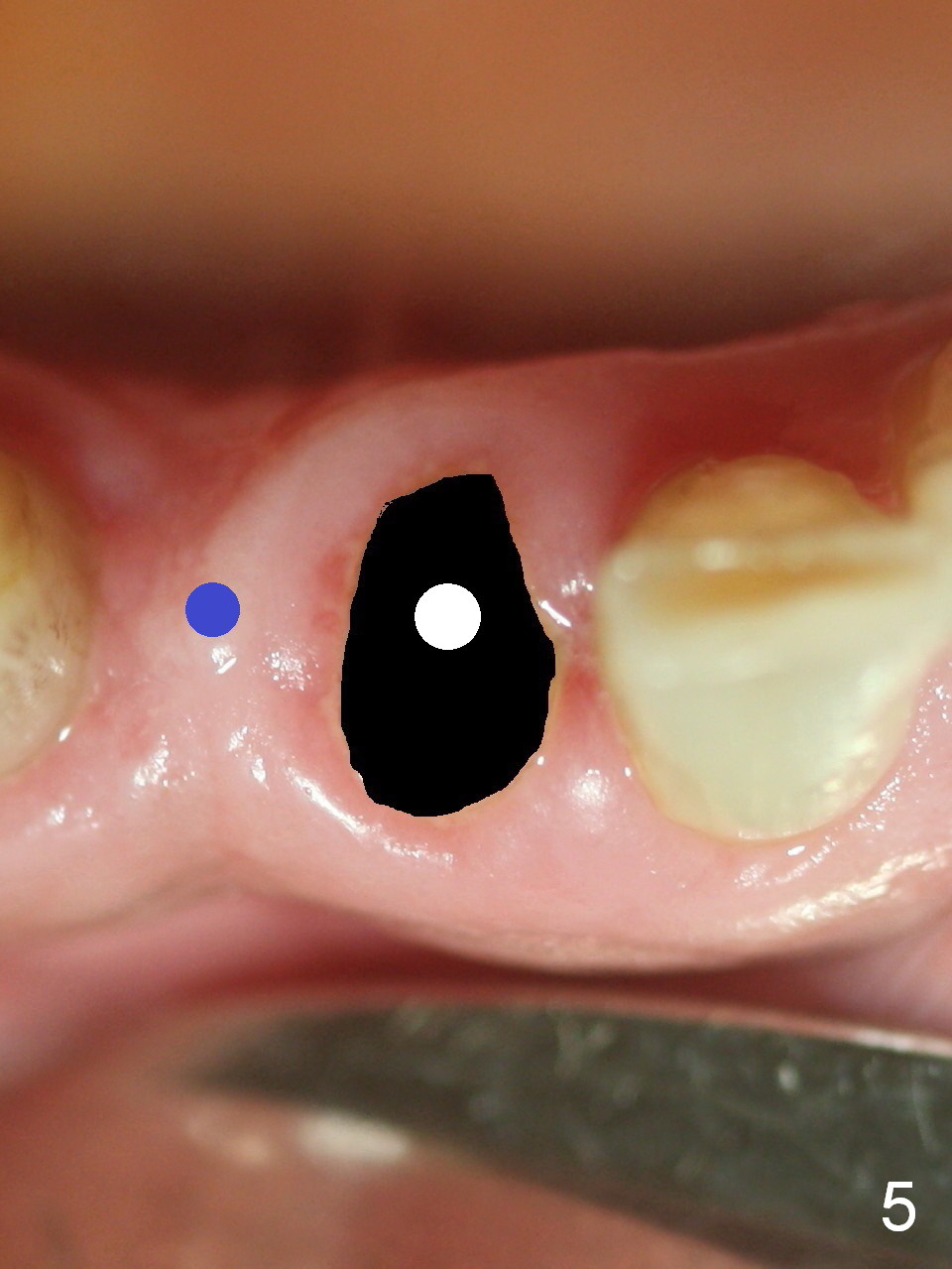
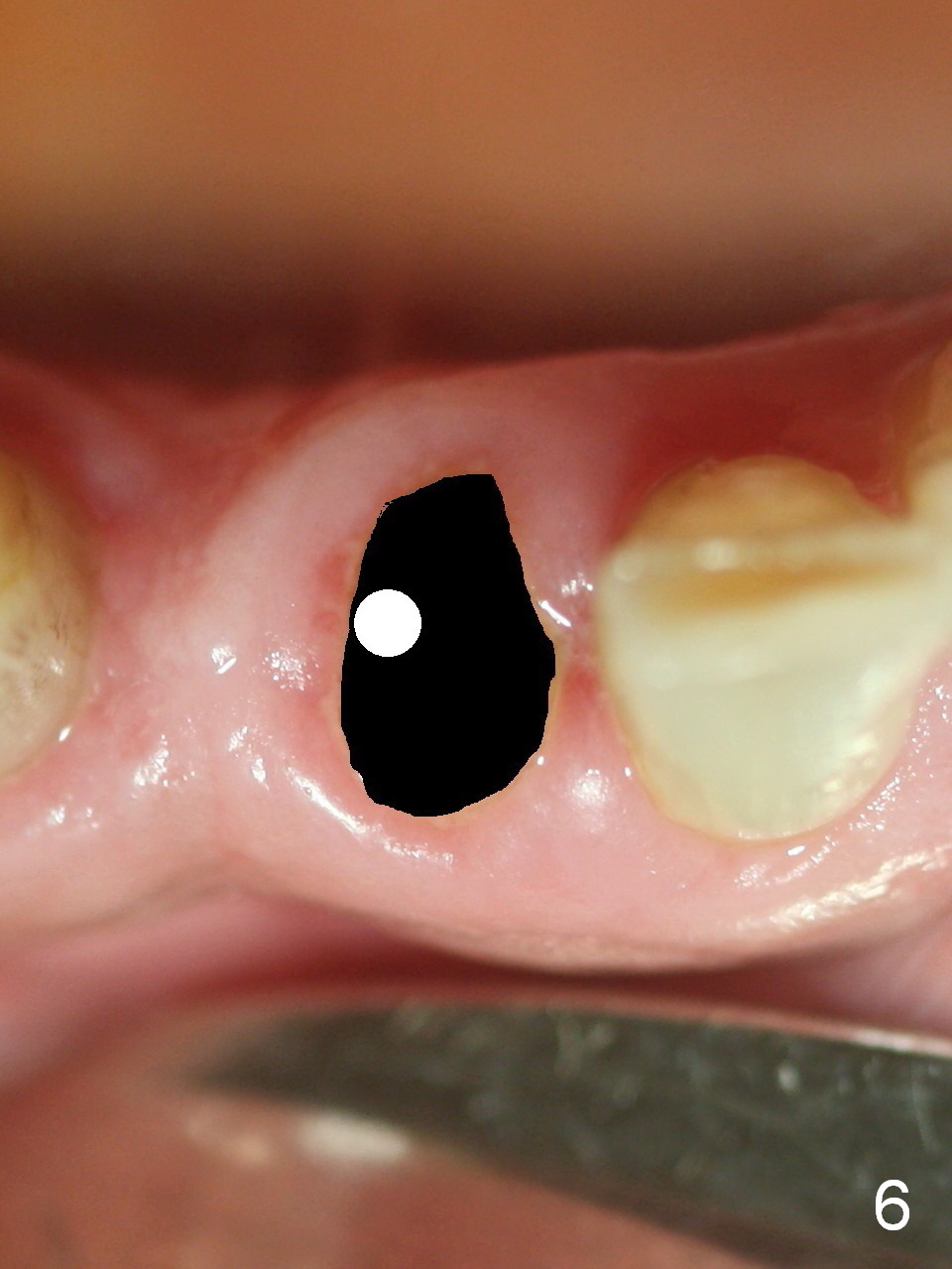
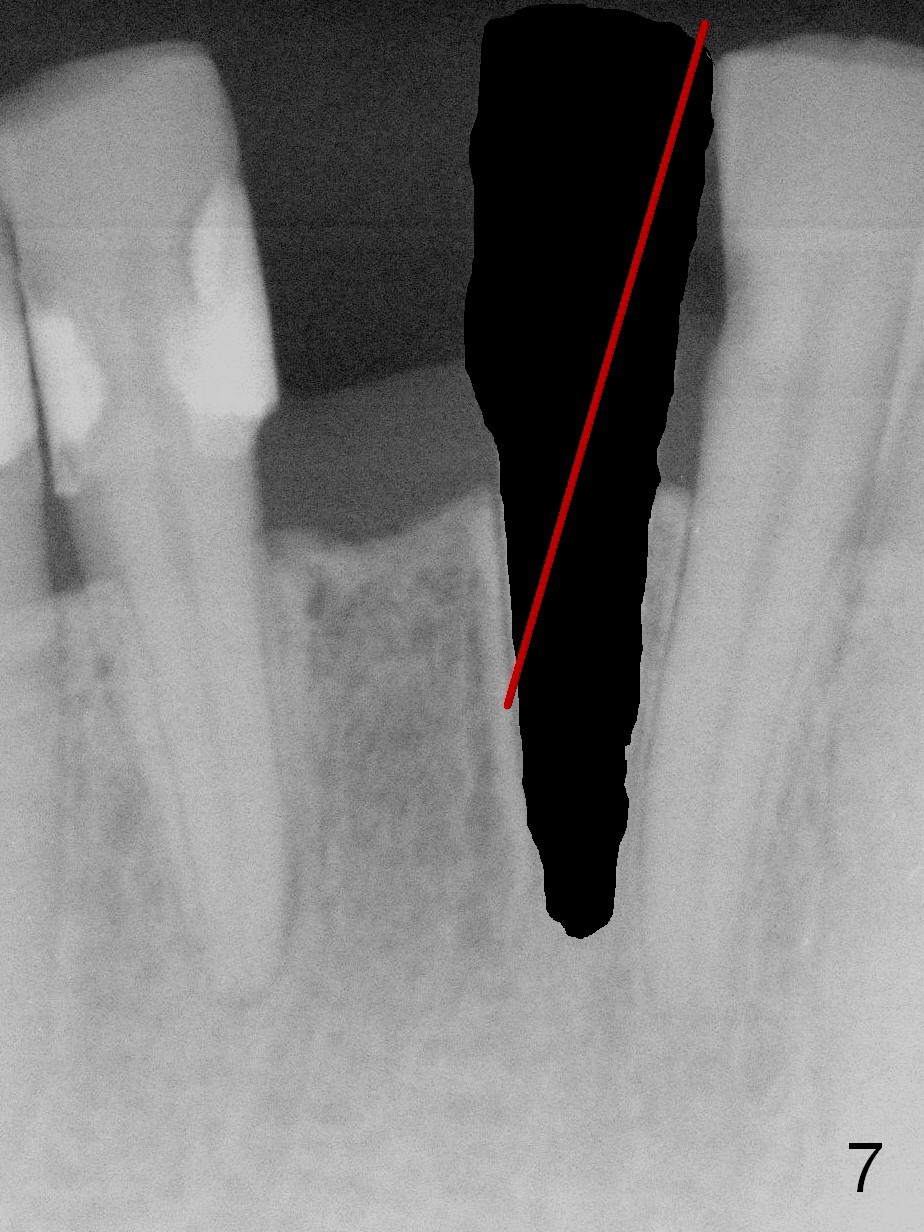
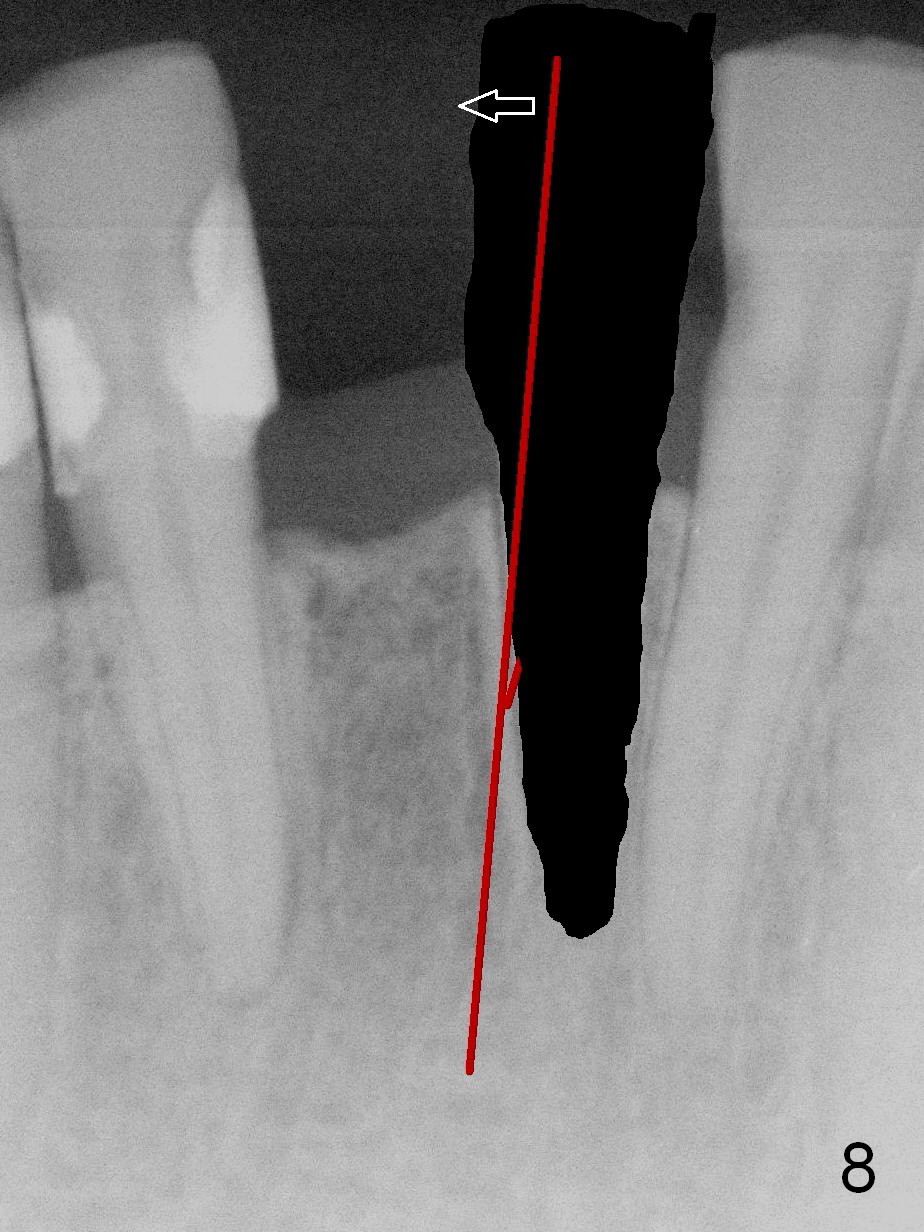
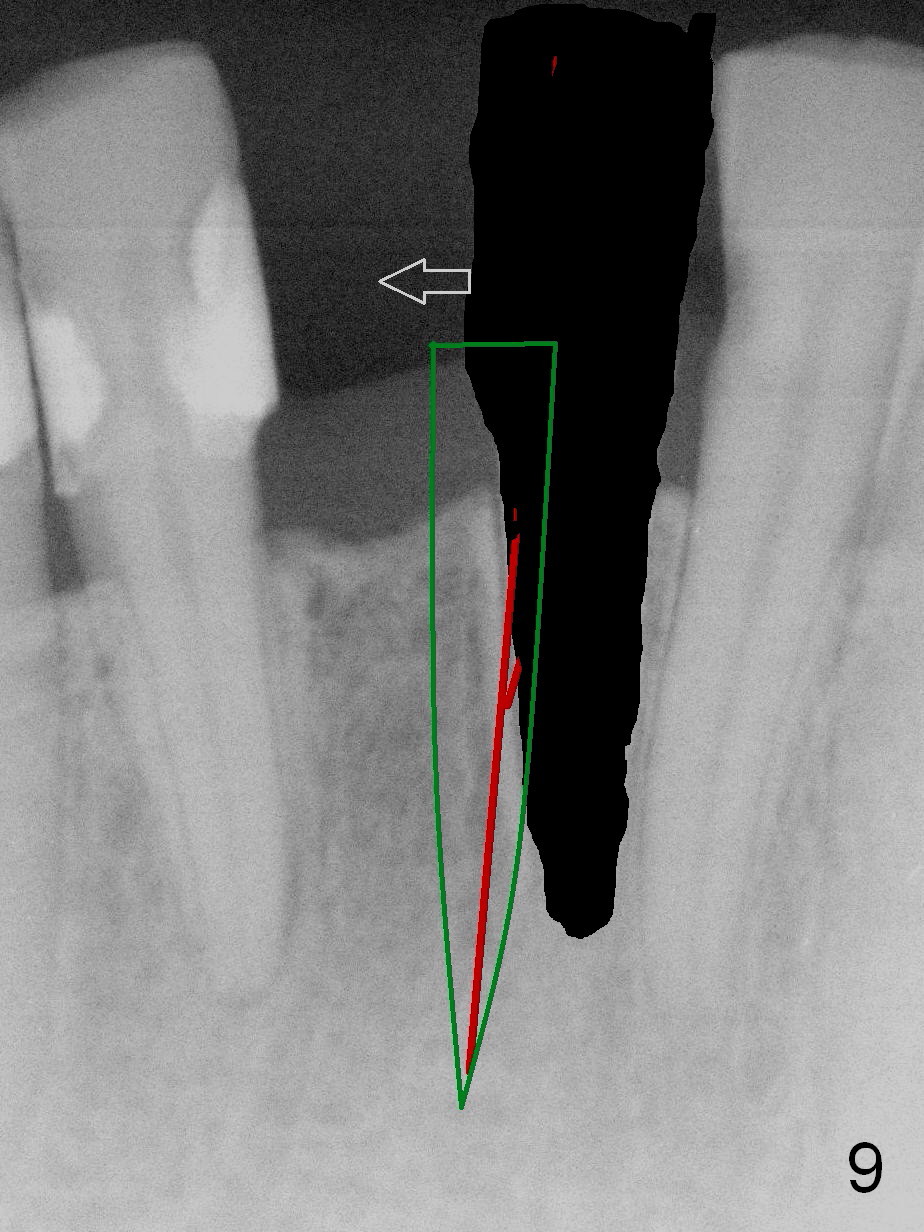
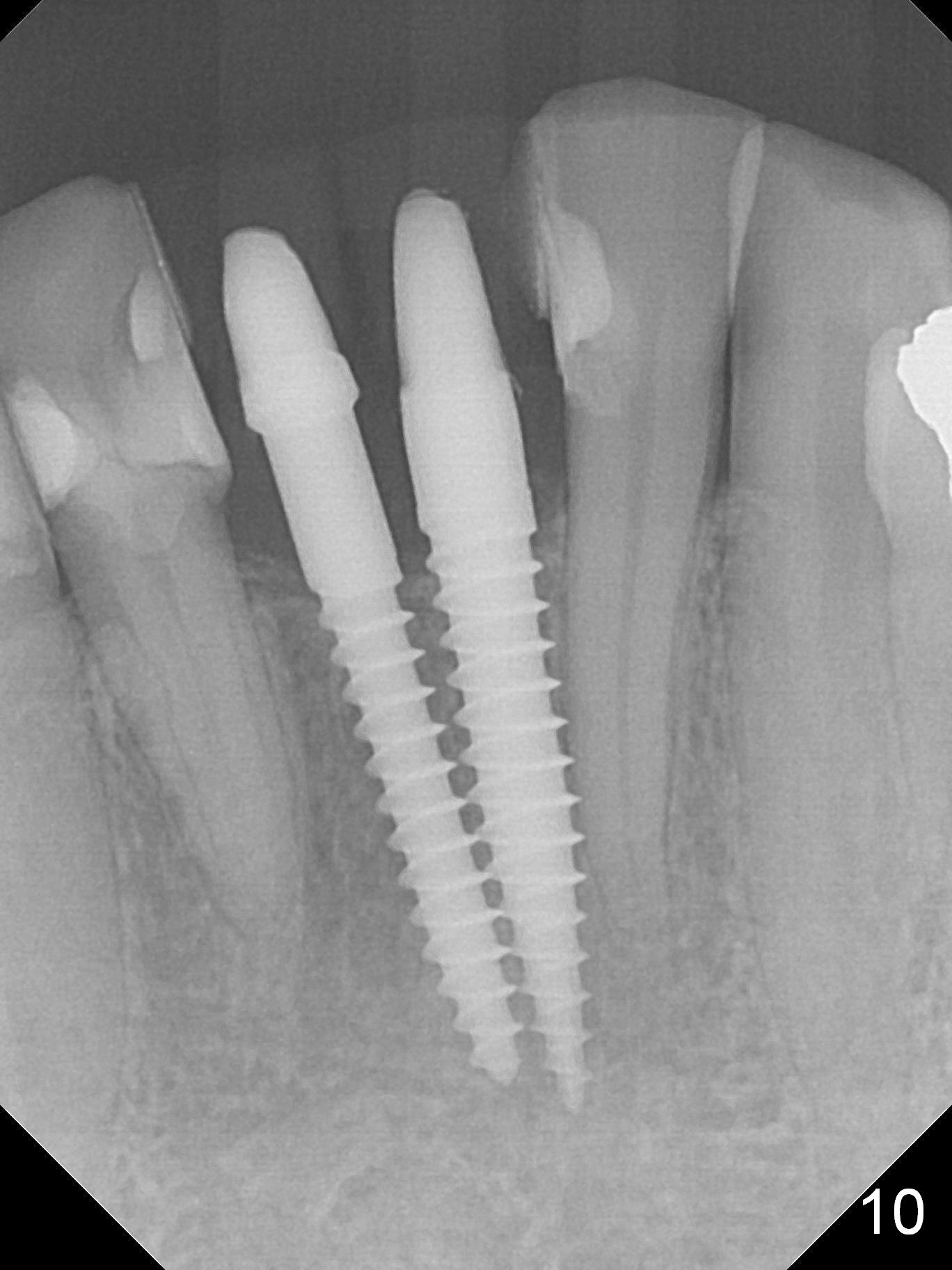
 |
 |
 |
 |
||
 |
 |
 |
 |
 |
 |
Two Implants are Too Much for 2 Central Incisors
Fig.1,2 show the narrow ridge at the site of #25 buccolingually. What is underestimated is the narrow mesiodistal space. The 1st intraop PA is taken with 1.5 and 1.2 mm drills at #24 and 25, respectively. The osteotomies are shown in Fig.5. In spite of change in trajectories, 3x16(2) and 2.5x14(4) mm 1-piece implants are close to each other and the root of the tooth #23 (Fig.4). We have to watch, since the patient is extremely nervous and sensitive to pain. Ideally after the 1st PA, the osteotomy at #24 should have been moved mesially (Fig.6 white circle). Once the drill (Fig.7 red line) penetrates the mesial slope of the socket (the lamina dura), the trajectory is to be moved continuously mesially (Fig.8 arrow). The mesial continuous mesial pressure is on (Fig.9 arrow) when the implant (green) is being placed.
When the implant is close to the root of the neighboring tooth, the latter is sensitive. If it proves too much for the patient, the 2 implant will be removed. Change the site of osteotomy as mentioned above and try to use the larger implant of the two. Two implants for 2 lower incisors are difficult to restore. For a severe crowding case, one implant is sufficient to support 3 incisors. In fact, the patient is doing well 12 days postop. There is no complaint of tenderness of the tooth #23. The patient remains asymptomatic 7 months postop; the implants appear to have osteointegrated (Fig.10).
Return to Lower Incisor Immediate Implant Xin Wei, DDS, PhD, MS 1st edition 07/28/2016, last revision 01/27/2019